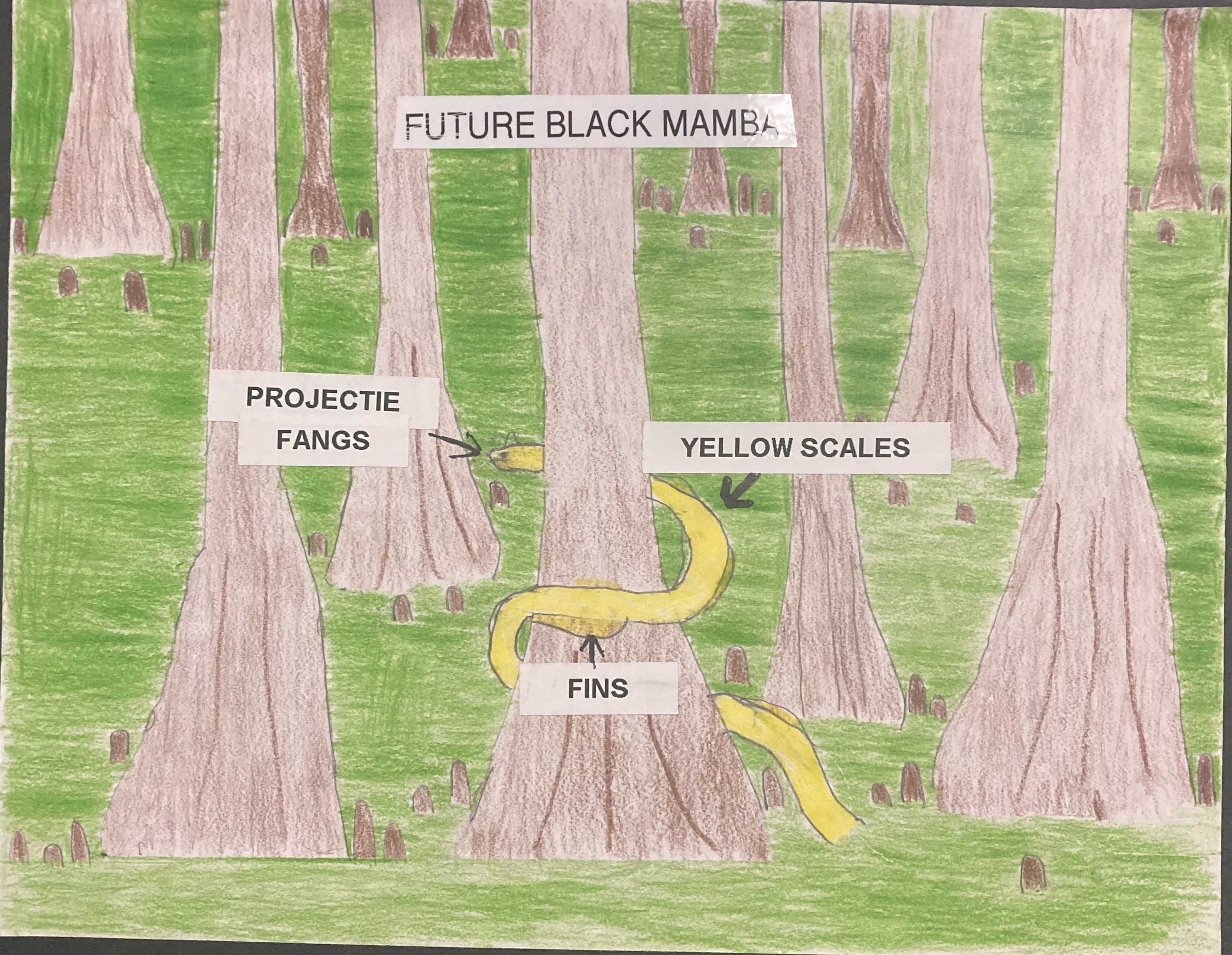The Black Mamba, known for its venomous defense and rapid speed, faces an evolutionary shift spurred by the changing landscape due to climate change. Once thriving in South and East African woodlands, the Mamba's habitat transforms into swamp lands because of rising waters from melting icebergs.
Existing adaptations, such as its venomous defense and swift escape capabilities, were suited for the woodlands. Yet, the swamp demands for some different adoptions. Such as changing the color of the Mamba's scales to a vivid yellow to serve as a warning to potential predators about its venomous defense. Additionally, the snake develops fins featuring muscles remarkably similar to its rib muscles, thereby enhancing its swimming ability.
This evolutionary transition showcases nature's ingenuity, underscoring the Black Mamba's adaptability to survive and thrive in the face of climate-induced habitat alterations. These adaptations exemplify the Mamba's resilience in navigating and excelling in evolving environments.
Contact us
Thank you for your interest in contacting Future Engineers. We look forward to connecting with you!
General Inquiries
support@futureengineers.orgSponsorship Inquiries
sponsor@futureengineers.org

